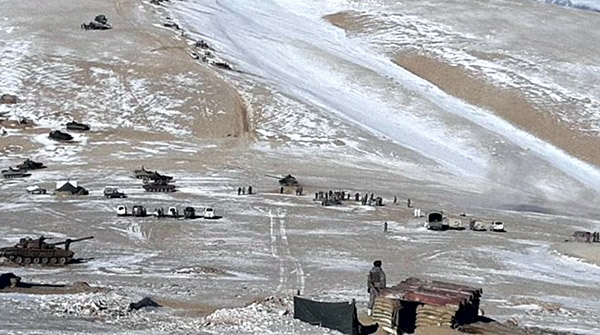China’s Face-Saving Pull Back
The sudden and very significant break-through in this period has been the successful disengagement talks between India and China over the Pangong lake North and South banks. Disengagement started 10 February and was completed by 20th at surprising speed. The eagerness with which the PLA executed the rearward movement could be indicative of two things. First, the PLA has had a very tough time in the Ladakh winter and was keen to pull back troops. The second is, given that India had gained a significant tactical advantage South of the Pangong Tso – China was in a hurry to clinch what it clearly felt was a favourable deal. In fact, there were considerable misgivings that India had given away its strongest bargaining chip very early on in the talks. Indeed, India had gained a significant military advantage by securing the Kailash Range heights of Rezang-La – Rechin La in end-Aug 2020, which enabled us to dominate the Chinese Moldo garrison and the traditional invasion route to Ladakh via the Spangur Gap. The tactical advantages of the South bank far out-weighed those the Chinese army had gained in the north bank. So what was critical was – what would happen next in the other friction points in Depsang, Daulat Beg Oldi (DBO) and Hot springs area? As expected, the Chinese seem to have dug in their heels there. Initial talks about these have been inconclusive.
It is now time to take stock. What were the Chinese motivations for the sudden and large scale incursions in Eastern Ladakh last year? One surmise is that the Chinese were genuinely perturbed over Indian assertiveness in Jammu & Kashmir as demonstrated by the cross-border air-strike at Balakote, the abrogation of Article 370 and trifurcation of J&K. They had to view this also in relation to India’s major push for long over-due infrastructure development in Eastern Ladakh. This, they felt, posed a threat to their Aksai Chin road as also their China-Pakistan Economic Corridor (CPEC). In my view, this major military coercive exercise was designed to primarily reassure Pakistan that it was not alone and China would definitely step in to aid that beleaguered ally against an increasingly assertive India. The express purpose was to encourage Pakistan to resume its asymmetric warfare in J&K & Punjab. So, this was a large scale coercive deployment exercise designed to brow-beat India and cow it down without a shot being fired.
If so, it largely fail to achieve its purpose. Though India was initially taken by surprise due to the Covid backdrop, it reacted strongly. To begin with, it carried out a rapid counter-mobilization and soon mirror imaged the Chinese deployment. It matched the PLA tank for tank, soldier for soldier and gun for gun. The Air Force also responded aggressively. In fact, India went for emergency induction of some 30 MiG-29 and Su-30 fighters and speeded up induction of Rafales and S-400 SAM systems. India was ready for a fight if China wanted one. Then came the high-profile Galwan clash in June 2020, where China used lethal force and some 20 Indian soldiers were martyred. Though no firearms were used, it was a major incident that trash-canned all the peace & tranquility accords from 1993 onwards and completely destroyed mutual trust between the two countries. The nation was outraged. Our boys had counted some 65 Chinese soldiers being carried away on stretchers. It was difficult to ascertain how many were fatal cases.
India enhanced its build-up and in end-Aug last year undertook a surprise, pre-emptive manoeuvre to occupy the Rezang La – Rechin La Ridge directly overlooking the Chinese Moldo garrison. This was a brilliant move that unhinged the Chinese. They were stupefied and rushed up tanks in a bid to sweep off the Indians. They were surprised to see Indian T-90 tanks there and a major face-off ensued – which has only been resolved now.
So what has made the Chinese blink? Their initial calculations of a low cost operation to coerce India seem to have gone awry. India refused to cow down and counter-mobilized. The situation escalated and soon became a stalemate with advantage – India.
Chinese strategic thinking lays emphasis on just one main strategic direction at a given point of time. Right now this is focused on Taiwan-South China Sea and the east coast of China. China clearly is not in a mood to open another major front on its western flank in Xinjiang. It defies common sense and all strategic logic. Hence, its quest for a face-saving pull-back from a futile coercive deployment that singularly failed to coerce India. Not surprisingly, Pakistan has also sought de-escalation on the Line of Control.

















